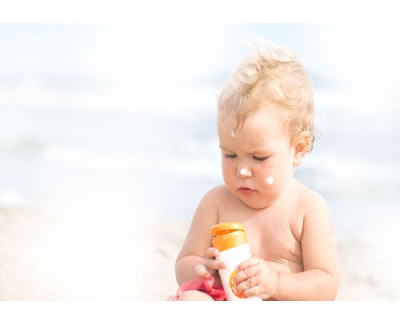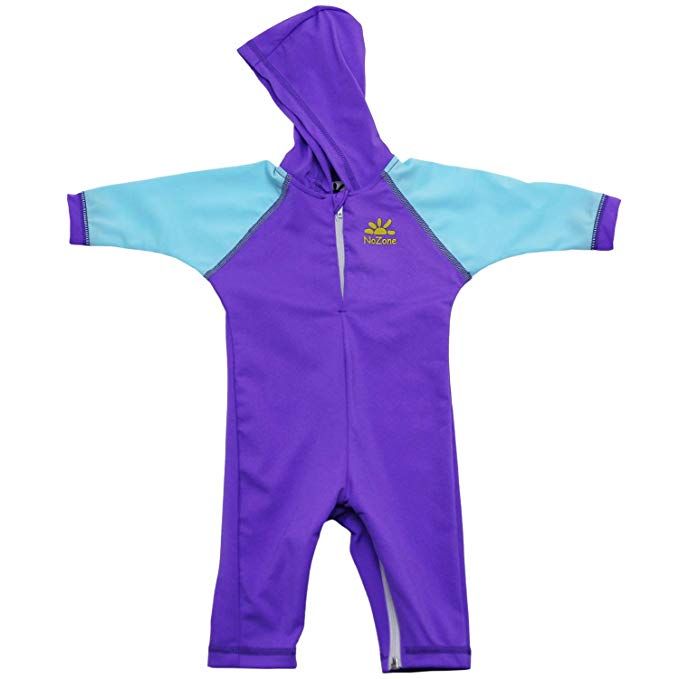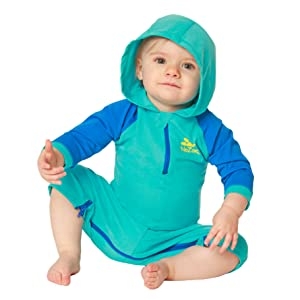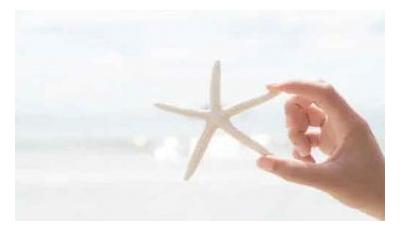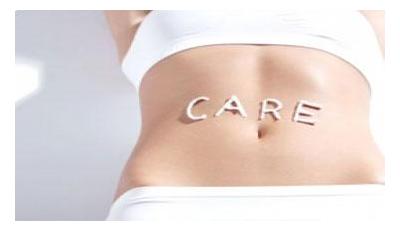Infants have much more delicate skin than adults and even older children. Additionally, they can be impacted to a higher degree by chemicals that impact hormones and development. Protecting infants from UV damage is very important, but care must be taken to use the right kinds of sun protection for them. Here are some recommendations from top national clinics on how to best protect your baby from the sun.
.

Infants Younger than 6 Months should not Wear Sunscreen
During their first few months of life, babies’ skin is still developing.1 Though water-tight and good at keeping germs out, newborn skin is thinner than skin in older children. Infants also do not sweat as much as adults do. Because of their highly sensitive skin, sunscreen should not be used on infants less than six months old. Other methods of sun protection should be used instead.2-5
Our Recommendation: Keep infants under 6 months old out of the sun or use sun protective baby clothing.
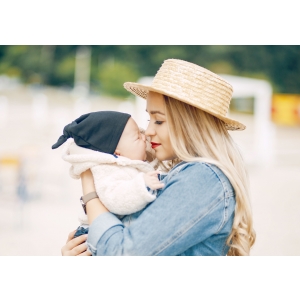

Use Other Forms of Sun Protection as Much as Possible
Sunburns in infants and children greatly increase their risk of skin cancers such as melanoma later in life.6 In their first few months, babies do not yet have a normal amount of melanin (the molecule that causes tanning and helps protect against UV radiation) in their skin. Infants younger than six months should be kept out of the sun as much as possible. If going out in the sun, use these methods to keep your child safe from solar rays:2-5
- Dress your baby in tightly-woven but loose-fitting clothing that covers their torso, arms, and legs (but make sure they do not overheat)
- Give your baby a brimmed hat that shades their face and neck
- Put sunglasses on your baby (you can find sunglasses made specifically for infants and toddlers)
- Keep your baby under a natural source of shade like a tree or under their stroller canopy or an umbrella
- Avoid going outdoors when the sun’s rays are the most intense, between 10 am and 2 pm
- Keep your baby hydrated
- Watch for signs of sunburn including fussiness, redness, or excessive crying, and get out of the sun right away if you notice any of these signs
Our Recommendation: Sun protection clothing with UPF (ultraviolet protection factor) of 50+.

Mineral Sunscreens are Safest for Infants 6 Months and Older
When old enough to wear sunscreen, babies may still be especially sensitive to certain chemicals in some sunscreens. For starters, they are in an important period of major growth and development. At this time, substances which disrupt their hormones or other developmental signals can have particularly damaging effects. With their small size, they also have a higher surface area to body weight ratio than adults and older children, meaning that chemicals on their skin can be absorbed into the interior of their bodies at a higher rate.2
Recent evidence has uncovered some health concerns regarding chemical sunscreen ingredients such as oxybenzone, octinoxate, and octocrylene. Some of these molecules are shaped similarly to the hormone estrogen. Because of this, they can also bind to estrogen receptors on cells. This can disrupt normal hormone signalling, lowering testosterone levels and dysregulating thyroid hormone levels.7,8 Chemical sunscreens also can cause skin irritation or allergic reactions. Delicate baby skin and eyes are especially susceptible to chemical irritation.9
Mineral sunscreen ingredients, like zinc oxide and titanium dioxide, are much safer.10 In fact, zinc oxide is an ingredient in baby powder to help manage diaper rash.11 Zinc oxide also provides full protection against both types of harmful UV radiation - UVA and UVB - which most chemical ingredients do not.12
Our Recommendation: California Baby SPF 30 is highly recommended mineral sunscreen by leading dermatologists and allergists for their patients with chemical sensitivities and fragrance intolerance. No nut oils, gluten, soy, oat or dairy.

Sunscreens for Babies
Most pediatric agencies recommend that sunscreens for kids be a minimum SPF of 15, though some say that you should use an SPF of at least 30 for babies and children.1,3,4
[1] Visscher MO, Adam R, Brink S, Odio M. 2015. “Newborn infant skin: physiology, development, and care.” Clin Dermatol. May-Jun; 33(3):271-280. https://www.ncbi.nlm.nih.gov/pubmed/25889127
[2] AAP. 2018. “Sun Safety and Protection Tips from the American Academy of Pediatrics.” American Academy of Pediatrics. https://www.aap.org/en-us/about-the-aap/aap-press-room/news-features-and-safety-tips/Pages/Sun-Safety-and-Protection.aspx
[3] FDA. July 6, 2016. “Should You Put Sunscreen on Infants? Not Usually.” U.S. Food & Drug Administration. https://www.fda.gov/ForConsumers/ConsumerUpdates/ucm309136.htm
[4] Gibson LE. June 27, 2018. “When is it OK for a baby to wear sunscreen?” Mayo Clinic. https://www.mayoclinic.org/healthy-lifestyle/infant-and-toddler-health/expert-answers/baby-sunscreen/faq-20058159
[5] Amarelo M, Pestano P. June 21, 2017. “19 Best-Scoring Sunscreens for Babies and Kids.” Environmental Wellness Group. https://www.ewg.org/enviroblog/2017/06/19-best-scoring-sunscreens-babies-and-kids
[6] Olivera SA, Saraiya M, Geller AC, Heneghan MK, Jorgensen C. 2006. “Sun exposure and risk of melanoma.” Arch Dis Child. Feb; 91(2):131-138. https://www.ncbi.nlm.nih.gov/pubmed/?term=Oliveria+SA%2C+Saraiya+M%2C+Geller+AC%2C+et+al.+Sun+exposure+and+risk+of+melanoma.+Arch+Dis+Child.+2006%3B91%3A131-138
[7] Burnett ME, Wang SQ. 2011. “Current sunscreen controversies: a critical review.” Photodermatol Photoimmunol Photomed. Apr; 27(2):58-67. https://www.ncbi.nlm.nih.gov/pubmed/21392107
[8] Kim S, Kim S, Won S, Choi K. 2017. “Considering common sources of exposure in association studies- Urinary benzophenone-3 and DEHP metabolites are associated with altered thyroid hormone balance in the NHANES 2007-2008.” Environ Int. Oct; 107:25-32. https://www.ncbi.nlm.nih.gov/pubmed/28651165
[9] Deleo VA. 2004. “Photocontact dermatitis.” Dermatol Ther. 17(4):279-288. https://www.ncbi.nlm.nih.gov/pubmed/15327473?dopt=Abstract
[10] Schneider SL, Lim HW. 2018. “A review of inorganic UV filters zinc oxide and titanium dioxide.” Photodermatol Photoimmunol Photomed. Nov 16; [Epub] doi: 10.1111/phpp.12439. https://www.ncbi.nlm.nih.gov/pubmed/30444533
[11] Panther P, Hines S, Kynoch K, Coyer F. 2017. “Effectiveness of topical skin products in the treatment and prevention of incontinence-associated dermatitis: a systematic review.” JBI Database System Rev Implement Rep. May; 15(5):1473-1496. https://www.ncbi.nlm.nih.gov/pubmed/28498177
[12] Environmental Protection Agency. “Sunscreen: The Burning Facts.” EPA 430-F-06-013, September 2016. https://www.epa.gov/sites/production/files/documents/sunscreen.pdf
-
Sunscreen vs Sunblock
By Dr. AnnaDecember 20, 2021 -
Pregnancy-Safe Sunscreens
By Dr. AnnaDecember 20, 2021 -
Physical vs Chemical Sunscreens
By Dr. KarenDecember 26, 2021 -
Reef Safe Sunscreens
By Dr. KarenDecember 21, 2021 -
Zinc Oxide Sunscreen
By Dr. KarenDecember 21, 2021
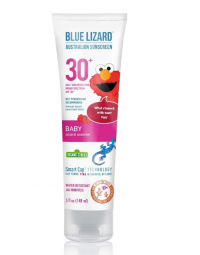
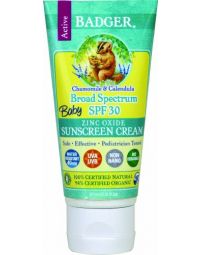

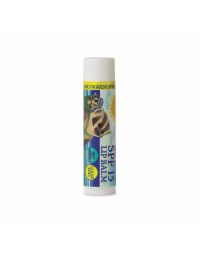
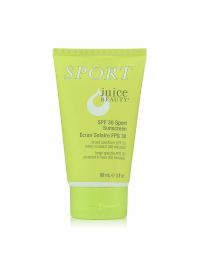
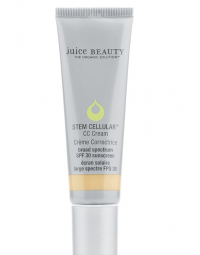
Search the blog
Article Categories
- All Articles (95)
- Rating Charts (1)
- Beauty & Skincare (17)
- FAQ (0)
- Hair Care (9)
- Health & Wellness (12)
- Anti-Aging (4)
- Kid's Health (0)
- Makeup (2)
- Men's Health (2)
- Oral Care (3)
- Sunscreen (7)
- Skin Tools & Treatments (10)
- Supplements (26)
- Videos (0)

